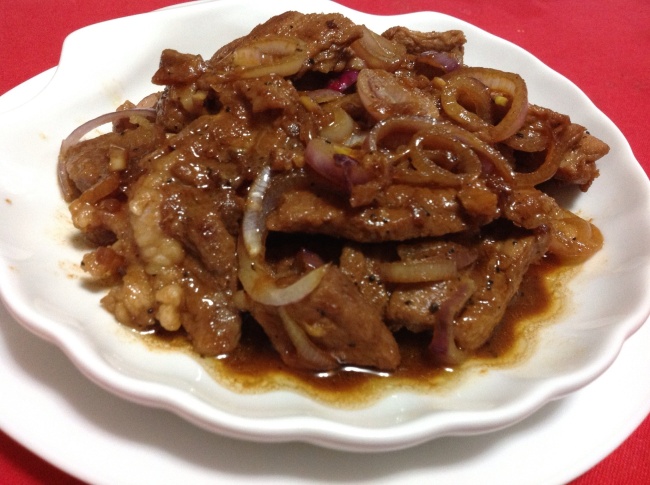Tags
bitter melon, food, healthy, pork, quick-dish, recipe, recipes, savory, steamed, veggies

Ampalaya, also known as bitter melon, is a green gourd vegetable with a distinctively bitter flavor. It’s a staple ingredient in many Filipino dishes, often cooked in a stir-fry with shrimps and egg, or as one in a medley of vegetables in pinakbet.
I am not put off by the bitterness of ampalaya, I find it bracing and particularly like how it cuts through the unctiousness of grilled meat or fatty dishes. This dish is steamed quickly to preserve the green of the bitter melon and keep the minced pork moist and savory. When stuffing the bitter melon sections with the pork mix, pack it firmly but make sure not to overfill. I like to pour the juices that come out from the cooking process over the amplaya, making this a comfort meal on its own or one that will pair well with steamed rice.
Ingredients:
1 large bitter gourd (ampalaya), cored and cut into 1 1/2-inch sections
500 grams ground pork
1 onion, finely chopped
3 cloves garlic, finely chopped
1 small carrot, finely diced
1 stalk spring onion, chopped
1 egg
1 tbsp cornstarch
1 teaspoon light soy sauce
salt and freshly ground black pepper, to taste
For garnish:
finely sliced red pepper
cilantro leaves
How to:
Wash the amplaya and slice into 1 1/2-inch sections. Using a spoon, scrape out and discard all the seeds. This leaves you with an empty center into which to stuff the pork mixture. Rinse the ampalaya sections thoroughly and soak in cold water with some salt. After 5 minutes or so, drain and set aside.
In a bowl, mix together the ground pork, onion, garlic, carrots, and spring onions. Break in the egg, add in the cornstarch, and mix well. Season with the light soy sauce, then salt and pepper to taste. Stuff this mixture into the ampalaya sections, making sure to fill the top into a rounded shape.
Place the stuffed ampalaya into a shallow bowl that fits into a saucepan. Fill the saucepan with water enough to reach halfway up the side of the shallow bowl. Cover tightly with a lid and let steam over medium heat until the pork has lost its pinkness and the amplaya is cooked, about 10 minutes.
Transfer amplaya into a serving dish and pour over the liquid that’s in the bowl. Add sliced red pepper and cilantro leaves for garnish. You can also drizzle some sesame oil on top for flavor and shine.










